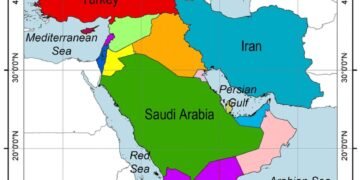Introduction
A cryptocurrency becomes valuable and successful when it solves a real-life problem and offers practical utility. Both Ripple and KIA Token are examples of such projects—one focused on international financial transactions, and the other dedicated to charitable giving and humanitarian aid.
In this article, we explore the key features, differences, and similarities between these two digital assets to provide a clearer understanding of their roles in the crypto space.
Introducing Ripple (XRP)
Ripple is a digital currency introduced in 2012 by Ripple Labs. Its main goal is to facilitate fast and low-cost international payments. Unlike Bitcoin, which emphasizes full decentralization, Ripple collaborates closely with financial institutions and banks.
Key Features of Ripple:
-
Purpose: Fast and cost-efficient global money transfers
-
Developer: Ripple Labs
-
Launch Year: 2012
-
Consensus Algorithm: RPCA (Ripple Protocol Consensus Algorithm)
-
Total Supply: 100 billion tokens
-
Circulating Supply: 58.04 billion tokens
-
Market Cap (as of April 2025): Approximately $135.15 billion
-
Price per Token: Around $2.33
Ripple is based on an inflationary model—more tokens are gradually released into circulation until the cap of 100 billion is reached. It is non-mineable.
Introducing KIA Token (KIATOKEN)
Launched in 2023, KIA Token aims to transform the donation and charity ecosystem through blockchain technology. Built on the Polygon network, it strives to bring transparency and trust to the process of charitable giving.
Key Features of KIA Token:
-
Blockchain Network: Polygon
-
Purpose: Decentralized and transparent charity ecosystem
-
Consensus Algorithm: Proof of Stake (PoS)
-
Use Cases: Facilitating charitable donations, financial transparency, incentivizing participation
-
Future Vision: Establishing a DAO to hand over governance to the community
-
Staking Rewards: Token holders can stake and earn additional tokens
-
Total Supply: 1 billion tokens (500 million locked, 500 million in circulation)
KIA Token emphasizes transparency in the distribution of donations by implementing “charity wallets” to ensure funds reach those truly in need.
Ripple vs. KIA Token: Side-by-Side Comparison
| Feature | Ripple (XRP) | KIA Token (KIATOKEN) |
|---|---|---|
| Primary Goal | Facilitate international financial transactions | Increase transparency and ease in charitable giving |
| Blockchain | Proprietary RippleNet network | Polygon network |
| Token Distribution | Pre-mined, gradual distribution | Pre-minted, non-mineable |
| Main Use Case | Global financial and interbank transfers | Transparent and direct humanitarian support |
| Target Audience | Banks and financial institutions | Donors, NGOs, and the general public |
Notable Similarities
-
Blockchain-Based: Both projects are powered by blockchain technology.
-
Non-Mineable: XRP and KIATOKEN are both pre-mined with no mining required.
-
Real-World Applications: XRP is designed for international finance; KIATOKEN is for charity and social impact.
-
Fast & Low-Cost Transactions: A key strength for both assets.
-
Exchange Listings: XRP is available on major exchanges; KIATOKEN is already listed on platforms like FameEX.com.
Conclusion
Ripple (XRP) is a seasoned and well-established project in the financial sector, while KIA Token (KIATOKEN) is a fresh and socially-driven initiative. Both leverage blockchain to offer solutions to real-world problems—XRP with global financial settlements, and KIATOKEN with transparent, decentralized charity.
One noteworthy difference lies in token supply: Ripple has 100 billion tokens, whereas KIA Token is limited to 1 billion. This significant disparity suggests that, should demand for KIATOKEN rise, it may have strong potential for price growth in the future.

 English
English






































